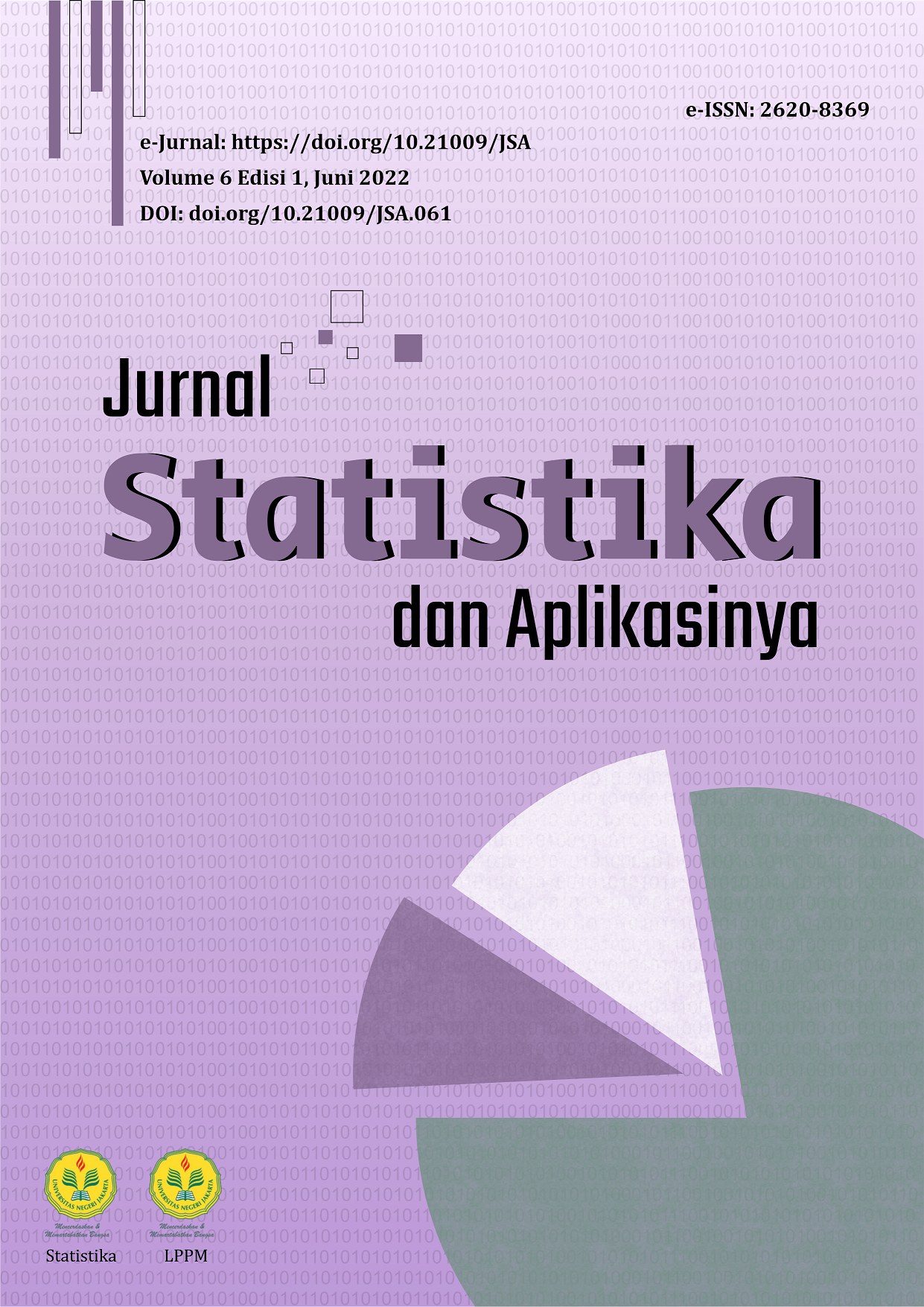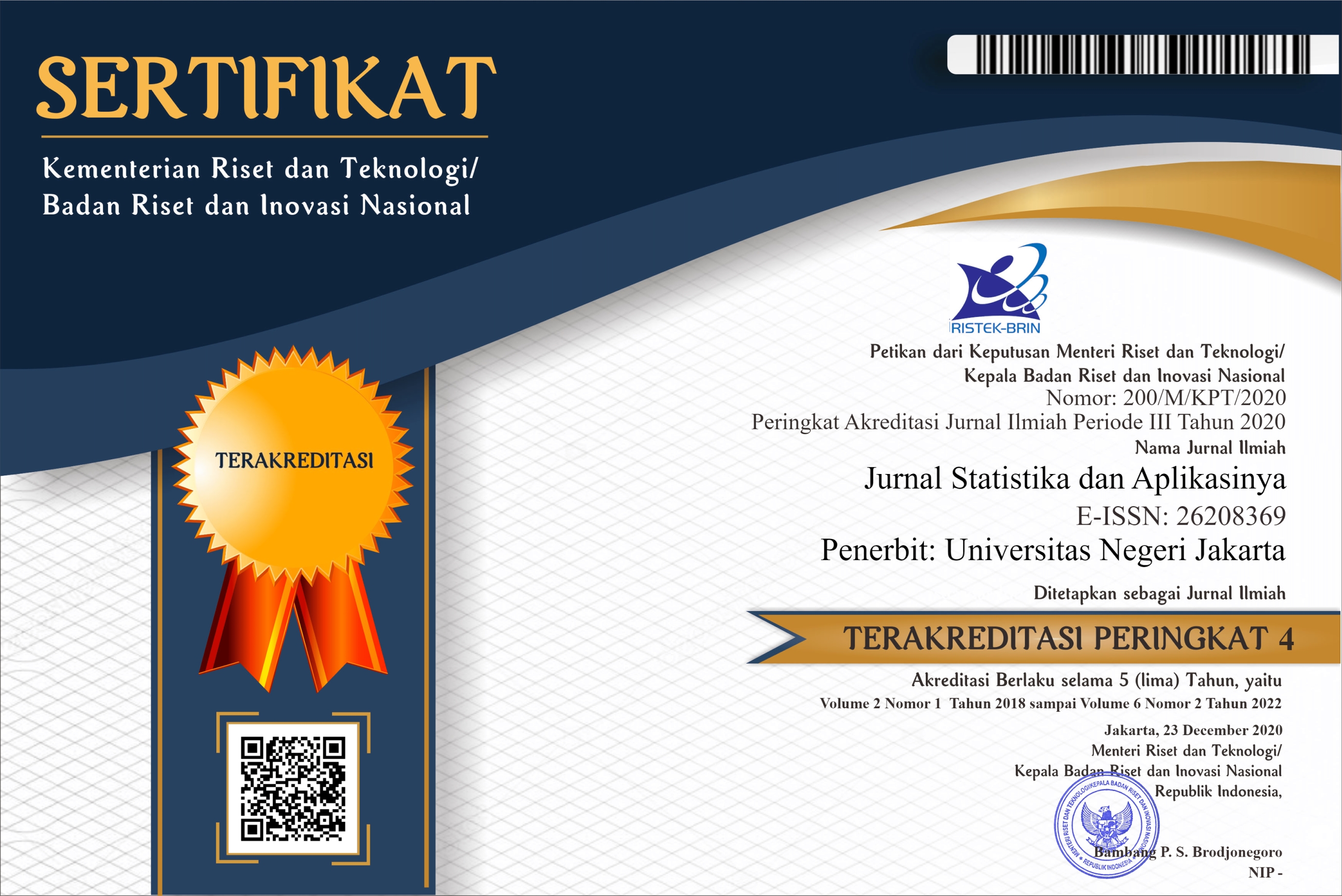Pemodelan Spasial pada Data Produk Domestik Regional Bruto di Pulau Jawa Sebelum dan Ketika Pandemi
DOI:
https://doi.org/10.21009/JSA.06102Keywords:
Geographically Weighted Regression, Nilai PDRB, Pemodelan SpasialAbstract
One of the regional economic indicators is GRDP, GRDP or gross regional domestic product explains the ability of the region to manage and utilize the resources in the area. In 2020, the Covid-19 pandemic entered Indonesia and caused the economy to stagnate. This has a negative effect on national economic activities and reduces the value of GRDP. To overcome these problems, we will look for factors that are thought to influence the value of GRDP. In the process there are obstacles, namely incomplete data (there are missing values). To overcome the missing values, imputation will be carried out using the k-nearest neighbor imputation method. The spatial effect test was conducted to determine whether there was a spatial effect on the data. Based on the test, it is known that there is spatial heterogeneity, so that the modeling of the GRDP value is carried out using the geographically weighted regression model. The GWR method can handle spatial non-stationary, so that it can be seen what variables significantly affect the value of GRDP in each district/city on the island of Java. Before the pandemic, the variables that affected the value of GRDP in Java were local income, average informal wages, realization of domestic investment, and the number of unemployed. During the pandemic, the variables that affect the value of GRDP in Java are local revenue, the realization of foreign investment, and the number of unemployed.






